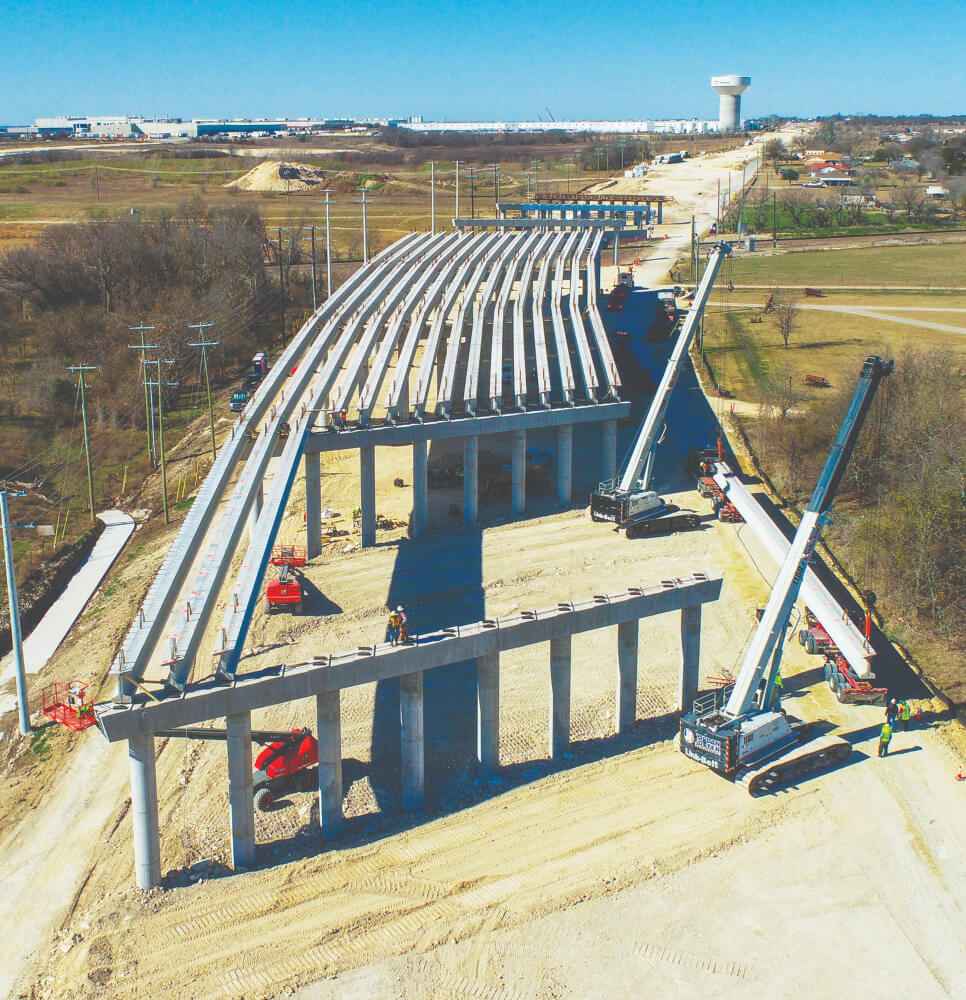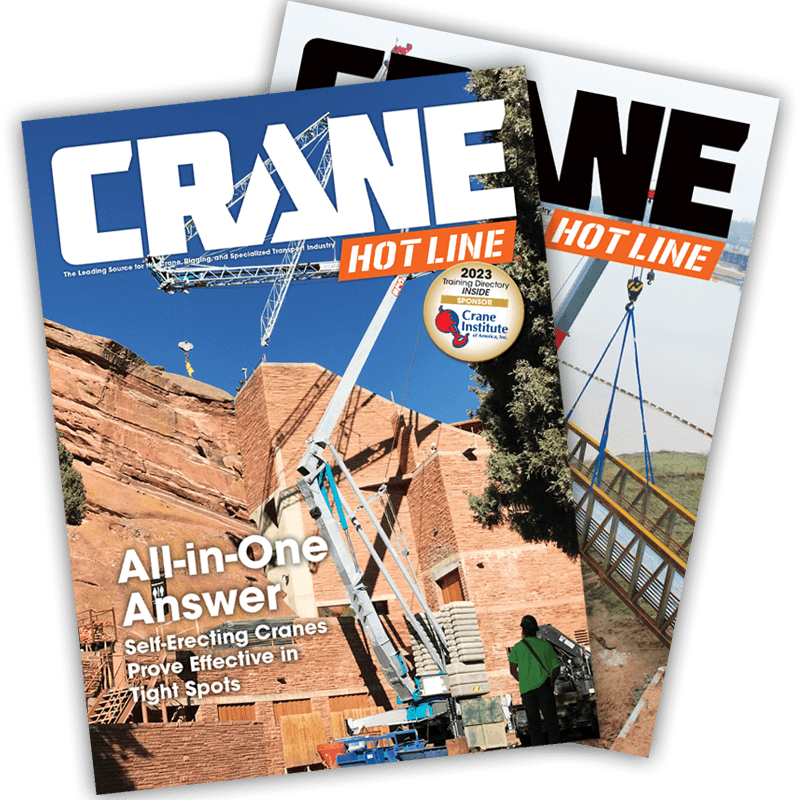Link-Belt Teleboom Crawler Cranes Set 138 Beams for Texas Infrastructure Project
Teleboom Tango
Jordan Foster Construction is relying on two Link-Belt telescopic-boom crawler cranes to help build a $46.2-million segment of a transportation infrastructure project in Temple, Texas.
Launched in February 2024, the Temple Outer Loop North Phase III project (Phase III) is building a 9,500-foot-long, four-lane roadway that includes a 1,135-foot-long bridge over a railway.
The Phase III project also incorporates six mechanically stabilized earth retaining walls, 12,910 feet of storm drainage, 5,100 feet of new water lines and 8,650 feet of new wastewater lines. It is scheduled to be completed in June 2026.
Phase III is part of a larger infrastructure project that will improve traffic mobility on Temple’s north and west sides and also help growth in those areas.
General contractor for Phase III is Jordan Foster Construction.
Founded in 1969 and headquartered in Austin, Texas, the company serves customers in the southern United States and is known for infrastructure, commercial and multi-family projects.
On Phase III, Jordan Foster is using a Link-Belt TCC-1200 teleboom crawler crane and a Link-Belt TCC-1100 teleboom crawler, both bought from Link-Belt distributor Holt Equipment.
The Link-Belt TCC-1200 can lift up to 120 U.S. tons, and the TCC-1100 can pick up to 110 U.S. tons.
Each features a full-power boom that telescopes from 40 feet to 150 feet.
Most recently, the two teleboom crawler cranes worked in tandem to pick, carry and set 138 prestressed concrete beams for an overpass.

Each beam measured 125 feet long, 4.5 feet deep, and weighed 110,000 pounds with rigging.
As each beam came on site, the two cranes lifted it off the delivery truck, then walked it into position before setting it atop concrete supports.
When site conditions permitted, the two cranes were positioned so they could lift a beam and then walk straight forward to its final position.
Other times, however, conditions dictated that they pick a beam while facing away from the setting point.
In those cases, the two cranes performed a carefully coordinated swing to maneuver the 125-foot beam between their booms while maintaining the specified radius before they could walk it into position and set it.
Jordan Foster crane operator Rick Jackson, the lead operator on this job, said that both cranes worked at a 25-foot radius with 60 feet of boom for the beam lifts. “That put us at about 75 percent of maximum capacity at that radius,” he said. “What’s most important in lifts like these is smoothness and control. These cranes gave us both, along with solid stability.”
That control, smoothness and stability also led to productivity. “We picked, walked and set as many as 15 beams in three and a half hours,” Jackson said. “We could have set 30 in a day if we had received that many.”
Matt Gold, Jordan Foster‘s operations manager, noted that the Link-Belt teleboom crawlers are vital to the project. “These cranes are both very reliable,” he said. “Their ability to work in tandem and operate within a compact jobsite fit our needs perfectly.”
Operator Rick Jackson, who has been running rigs for more than 40 years, appreciates the Link-Belt teleboom crawlers’ ability to travel with suspended loads. “If you can pick a load, you can walk with it,” he said.
Jackson also noted that their quick setup lets them go to work shortly after arriving on site, and that maintenance features like centralized grease fittings simplify upkeep and maximize uptime.
“For what we do, these cranes are perfect,” Jackson said.
Jordan Foster is setting the last of the 138 beams in late April.
The Link-Belt teleboom crawler cranes’ next task on the job will be setting panels for the bridge.
“For that work, we will be working with the powered boom extended to its full 150-foot length, plus have a lattice jib on top of it,” Jackson said.



